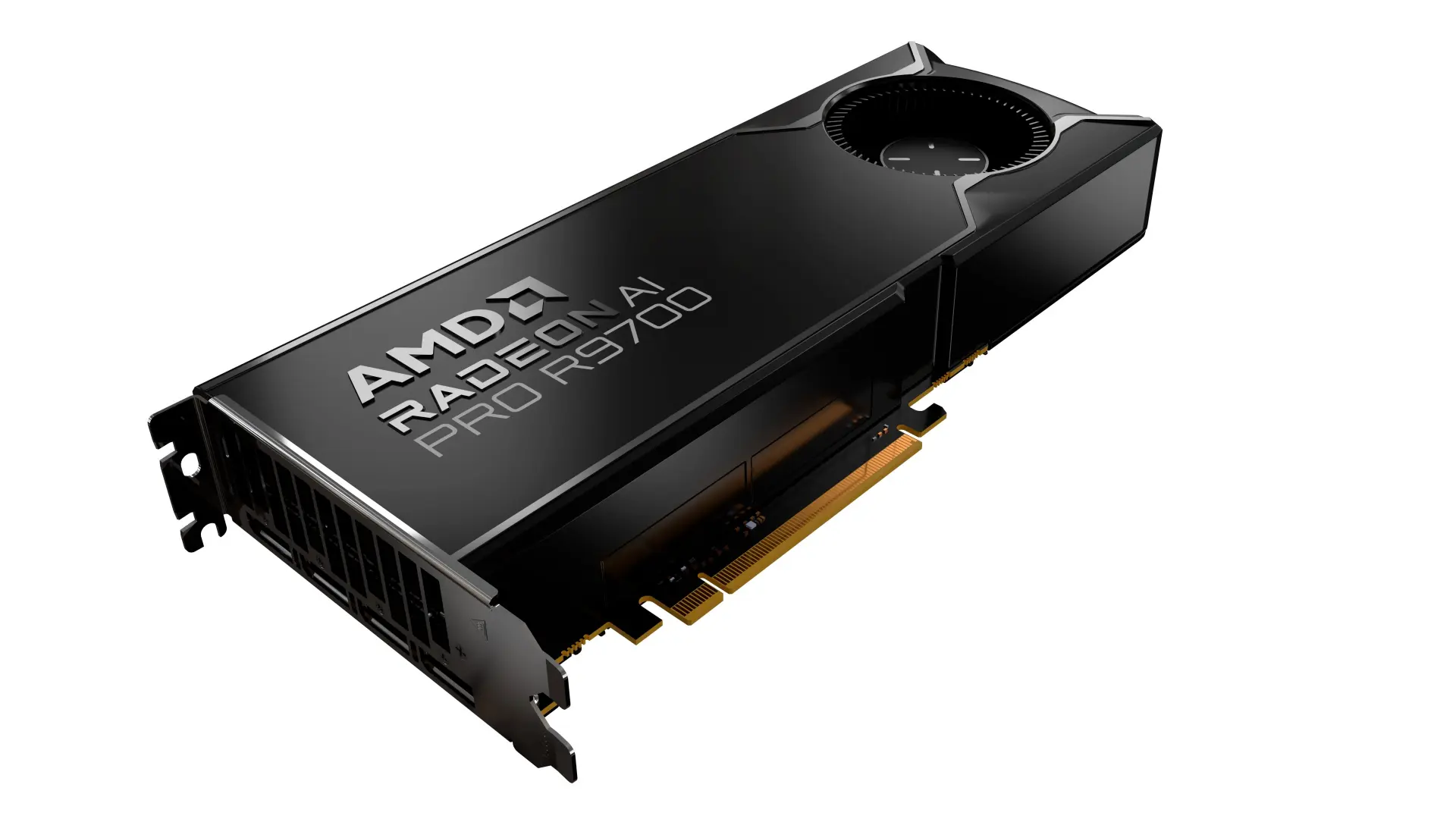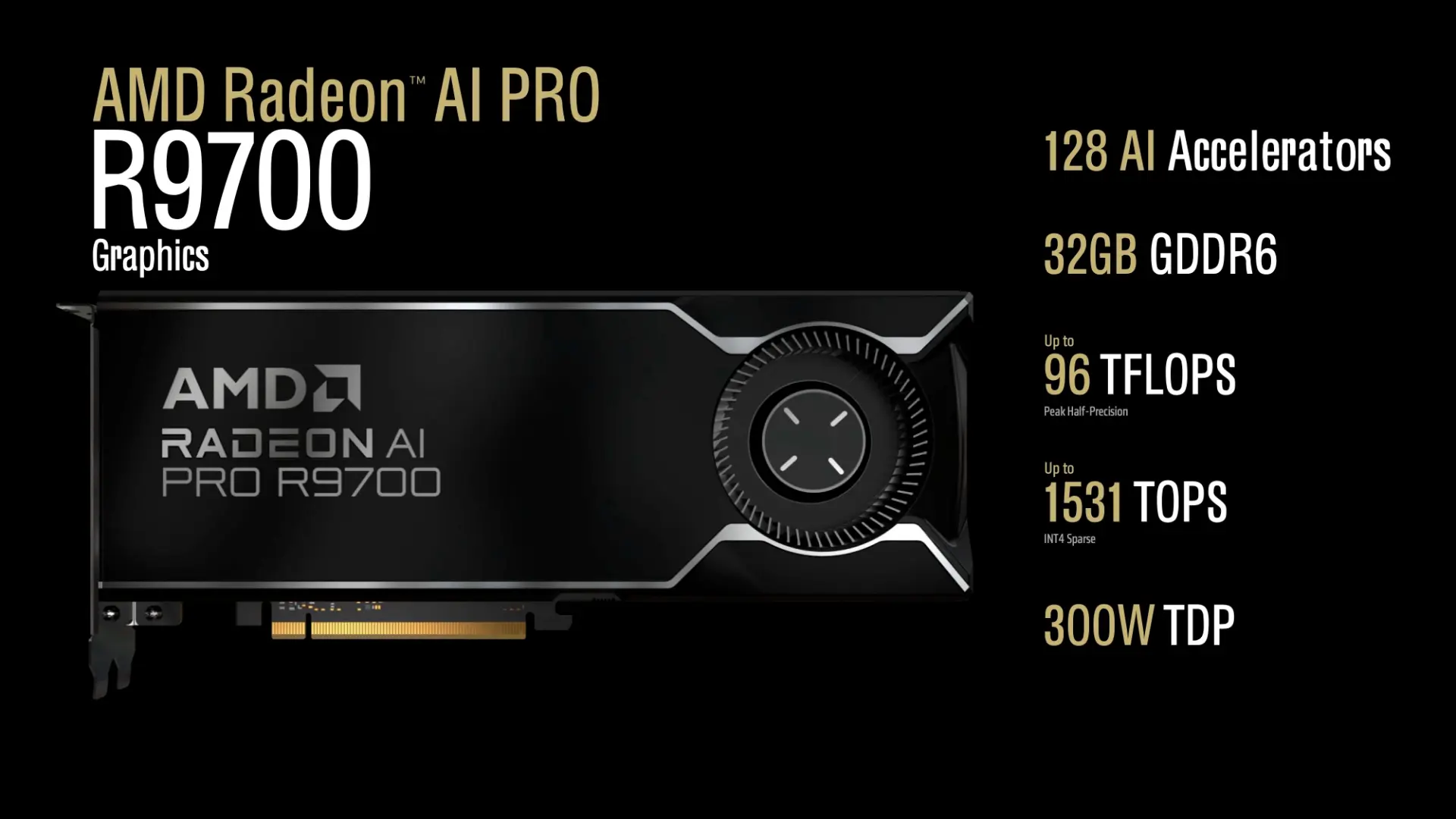At Computex 2025, AMD expanded its professional graphics lineup by introducing the Radeon AI Pro R9700. This new GPU, built on the RDNA 4 architecture, is designed to meet the demanding needs of workstation users, offering significant advancements in AI processing and graphical performance.
RDNA 4 Architecture: A New Era for Professional Graphics
The Radeon AI Pro R9700 marks AMD's first foray into professional GPUs utilizing the RDNA 4 architecture. While RDNA 4 was initially developed with gaming in mind, AMD has adapted it to cater to professional applications, similar to their previous approach with RDNA 3 and the Radeon Pro W7000 series.

Navi 48 Chip: The Heart of the R9700
At the core of the R9700 lies the Navi 48 chip, boasting a die size of 357 mm² and housing 53.9 billion transistors. This makes it the largest RDNA 4 chip to date. By returning to a monolithic design and employing TSMC's 4nm N4P process, AMD has achieved a transistor density of 151 million per mm², a 38% increase over the previous generation's Navi 31.
Performance Enhancements
The R9700 is equipped with 64 RDNA 4 compute units and 4,096 stream processors. While this is fewer than the 96 compute units and 6,144 stream processors found in the Navi 31, the architectural improvements in RDNA 4 ensure superior performance. The GPU delivers 96 teraflops of FP16 performance, approximately 6% faster than the Radeon Pro W7800. Its AI processing capabilities reach up to 1,531 TOPS (trillion operations per second), enabling efficient handling of complex AI models.

Benchmark Comparisons
In tests involving the DeepSeek R1 Distill Llama 8B model, the R9700 demonstrated double the performance of the W7800. Additionally, when compared to NVIDIA's RTX 5080, the R9700 was up to five times faster in certain AI workloads, highlighting its competitive edge in AI processing tasks.

Memory and Power Specifications
The Radeon AI Pro R9700 comes with 32GB of GDDR6 memory. While AMD has not disclosed the memory speed and bus width, it's anticipated that the R9700 will feature faster memory than its predecessors, such as the W7800, which utilized 18Gbps GDDR6 memory. The total board power (TBP) is rated at 300 watts, a 15% increase over the W7800. The power connectors are located at the rear of the card, likely comprising two 8-pin PCIe connectors, accommodating the higher power requirements.
Display Outputs and Connectivity
The R9700 is equipped with four DisplayPort outputs. Given the RDNA 4 architecture, these are expected to support the DisplayPort 2.1a standard, offering enhanced display capabilities suitable for high-resolution, high-refresh-rate monitors.
Conclusion
With the introduction of the Radeon AI Pro R9700, AMD has made a significant stride in the professional GPU market. By leveraging the RDNA 4 architecture, the R9700 delivers substantial improvements in AI processing and graphical performance, positioning itself as a formidable competitor to NVIDIA's offerings. Its combination of advanced architecture, increased memory capacity, and robust performance metrics makes it a compelling choice for professionals seeking cutting-edge graphics solutions.


Comments
Leave a Comment